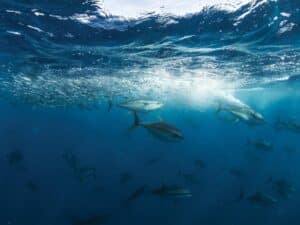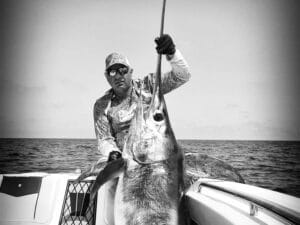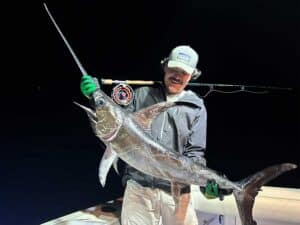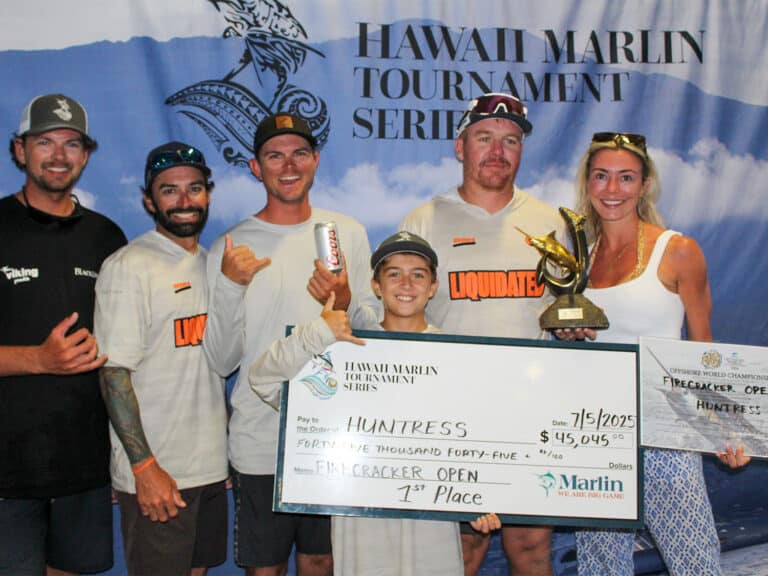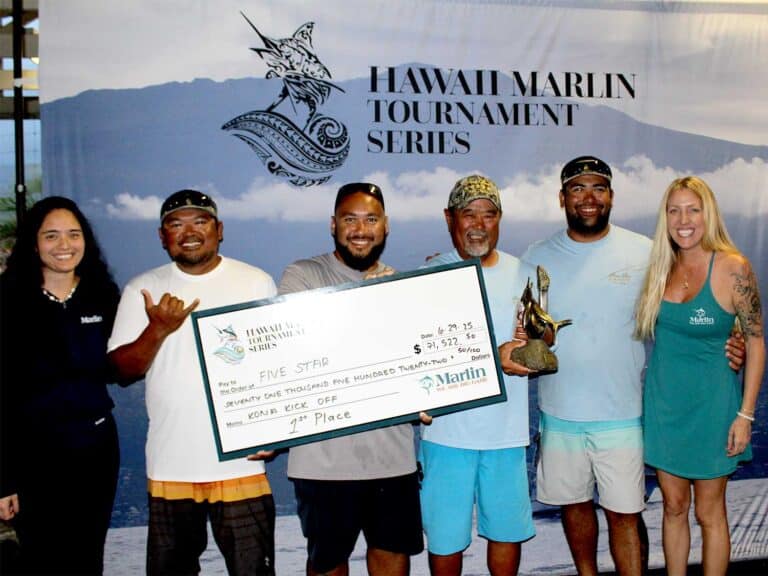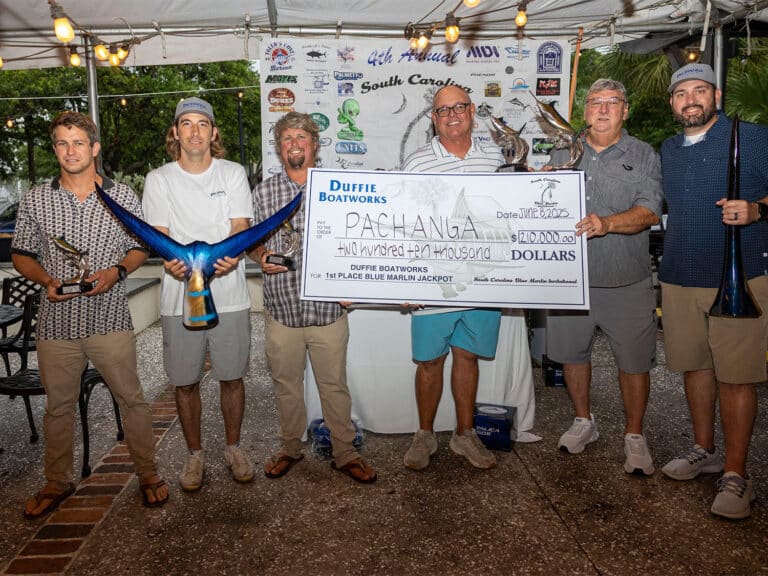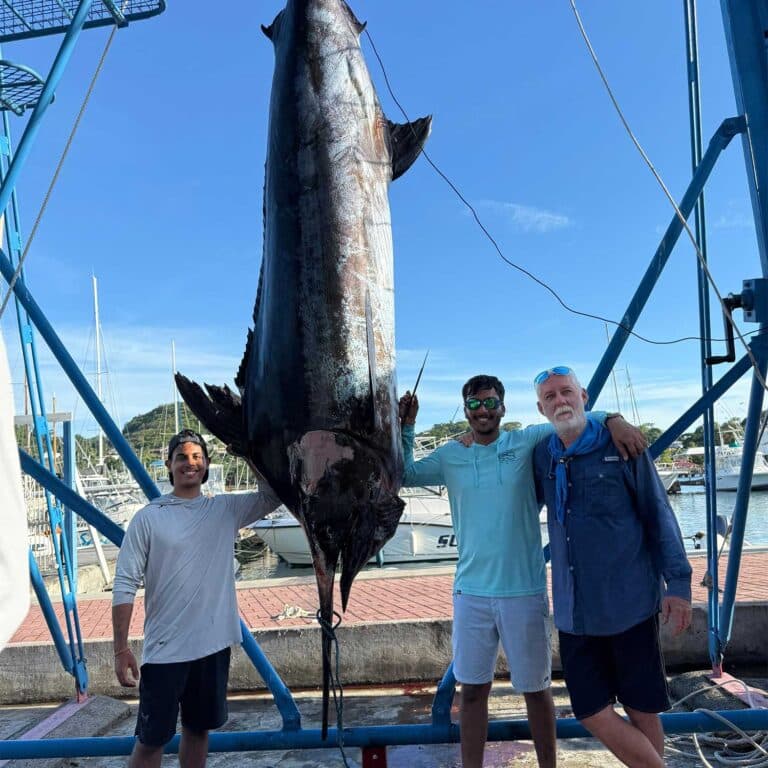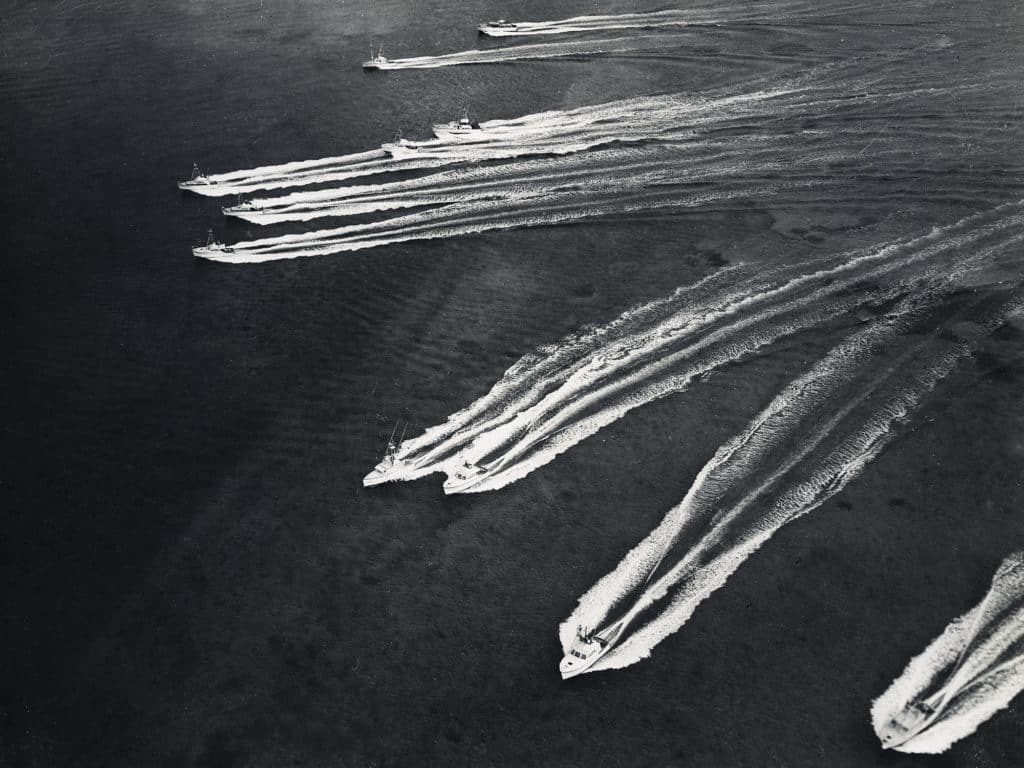
There must be something inherently special about a tournament in which the participants fail to catch any fish two years in a row, yet everyone still has a great time and can’t wait to get back the next year. Such is the case with the Cat Cay Tuna Tournament. The team from Costa Sunglasses revived this extraordinary event several years ago after a 23-year hiatus, and those who remember the heyday of bluefin tuna fishing in this quiet corner of the Bahamas couldn’t wait to give it another try. This was the 50th Cat Cay Tuna Tournament, the second one held since its rebirth.
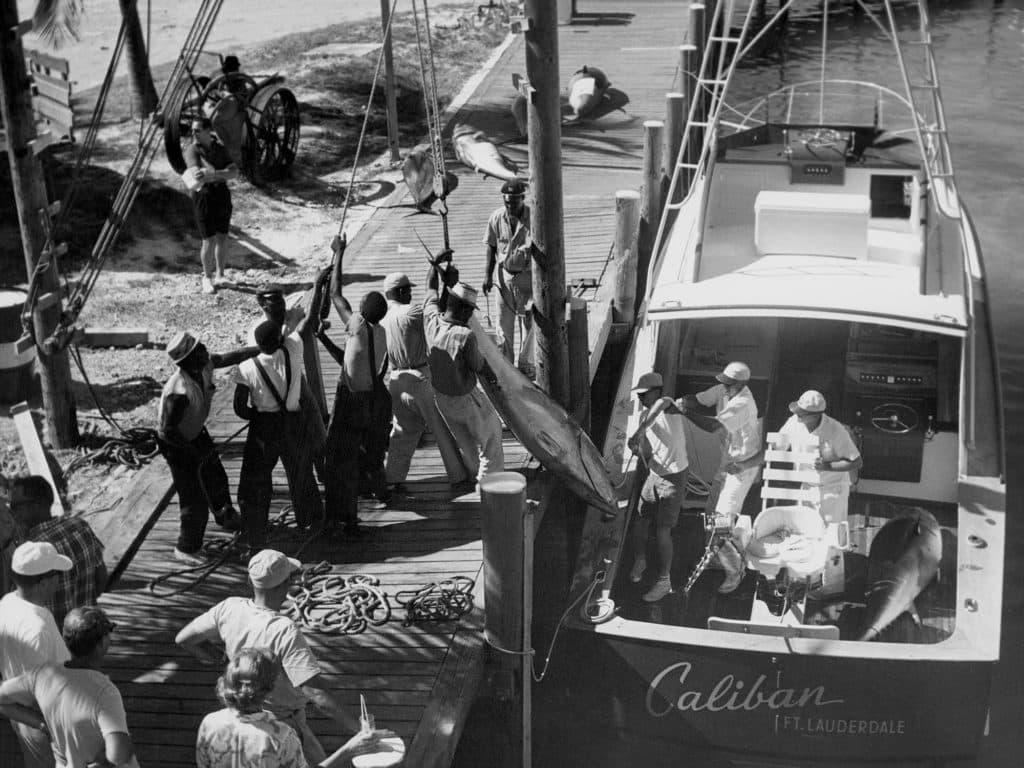
The original fishery was the stuff of legends. The inaugural tournament debuted in 1939 and quickly became one of the most prestigious tournaments in the world. The unique bottom structure just off the beach at Cat Cay made this possible: A shallow white strip of sandy bottom runs parallel to the drop-off in a north and south direction for miles. When certain weather conditions occurred — particularly a stiff breeze from the southwest — giant tuna migrating from the Gulf of Mexico popped up onto the sand from the adjacent deep blue water.

Living History
Crews in boats equipped with tuna towers — the term was coined here — motored slowly up and down the sand strip, which came to be known as Tuna Alley. From their perches high above the water’s surface, sharp-eyed crews could spot the cruising fish and maneuver their boats in front of the school in the hope of enticing a strike by dragging a swimming mullet or mackerel in front of them.
A crucial game of expert boat driving came into play after the crew hooked the fish, and it was in Cat Cay that the early 37- and 43-foot Merritts and 36-foot Rybovich boats earned their place in sport-fishing history. These highly maneuverable boats, driven by some of the best captains in the business, were used to herd hooked fish into the shallows in an attempt to prevent them from diving back over the edge into the deep blue water. If the fish made it over the edge, they were usually lost to waiting sharks; if you kept the bluefin on the sand, you had a good chance of landing it.
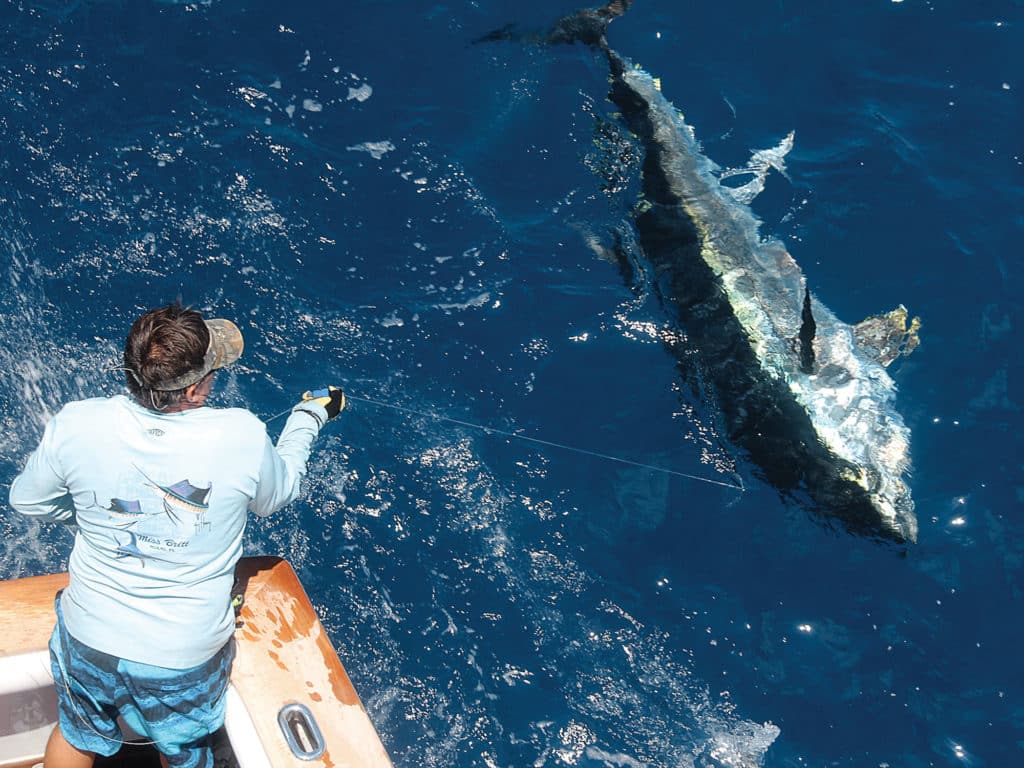
Many great captains and anglers came to Cat Cay over the years, including captains Bill and George Staros. Bill Harrison, John Sabonis and Roy Merritt Jr. also spent many years chasing giants off Cat Cay, and they all attended this past year’s event. Legendary anglers from years past include Buddy and Allen Merritt, Jo Jo Del Guercio, Elwood Harry and Bill Carpenter, who once fought 15 giants in one day along Tuna Alley.
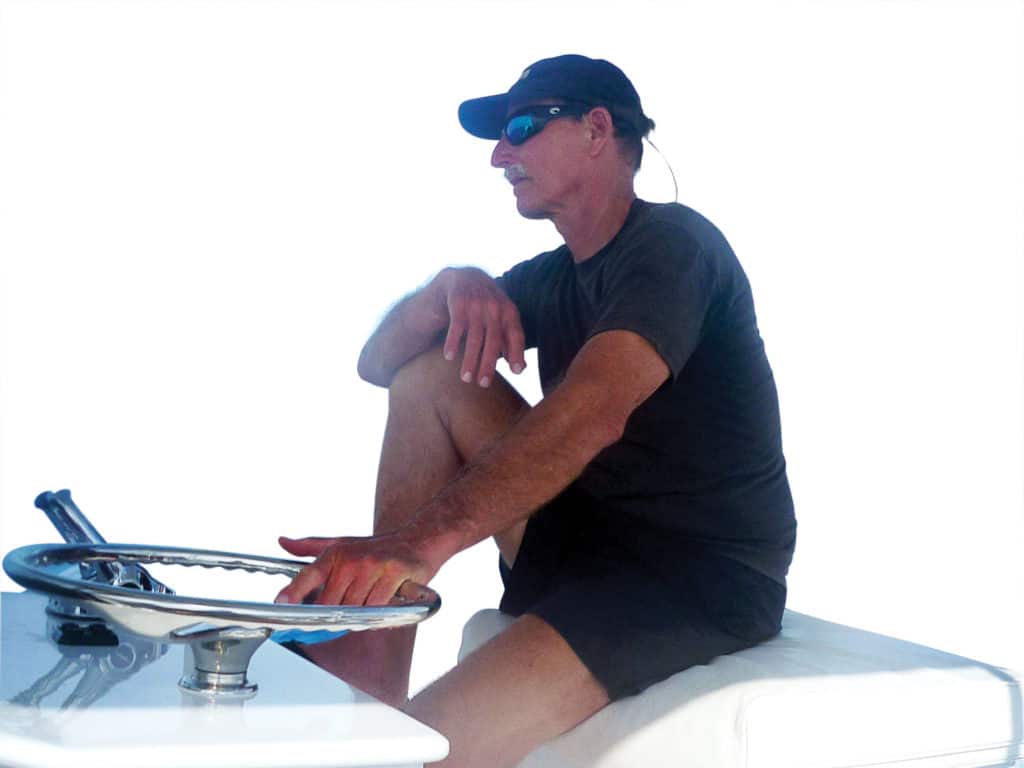
Mission: Deploy Tags
Tournament director Amanda Sabin, Costa’s offshore community manager, remains passionate about the event. “We had six boats fishing the 2015 tournament with around 35 participants,” says Sabin. “The goal of the tournament was to successfully tag bluefin tuna with pop-up satellite archival tags in an effort to learn more about the giants swimming through Tuna Alley,” she says. “Although we were unable to tag fish in Cat Cay, we did deploy the eight tags purchased by Costa in Nova Scotia this year. We worked together with the Large Pelagic Research Center and Capt. Anthony Mendillo to deploy the tags. This will help provide substantial data that is important in bluefin conservation efforts and policy decisions.”
We want to celebrate the sport we all love so much while working to preserve the fishery for generations to come.
— Amanda Sabin
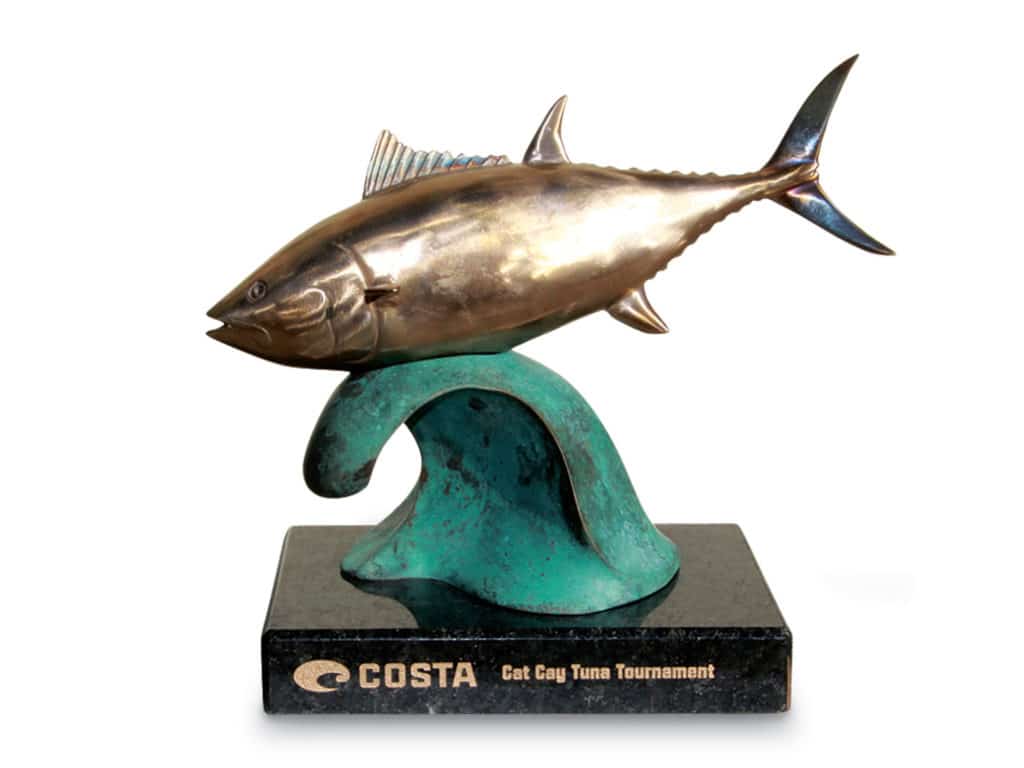
Sabin says the tournament will go on in 2016 as well. “Once again, we plan to tag some giants in Cat Cay,” she says. “No fish were caught last year, but we did see a few before the winds died out. The fishery in Cat Cay represents the birth of big-game fishing on the East Coast. We felt it was important to carry on the roots and the legacy of big-game fishing by bringing back the tournament. We have tried to keep the traditions of the tournament alive as much as possible. Unlike most tournaments these days, there is no prize money. It’s a gentlemen’s event where bragging rights and a trophy are awarded to each year’s top dog.”
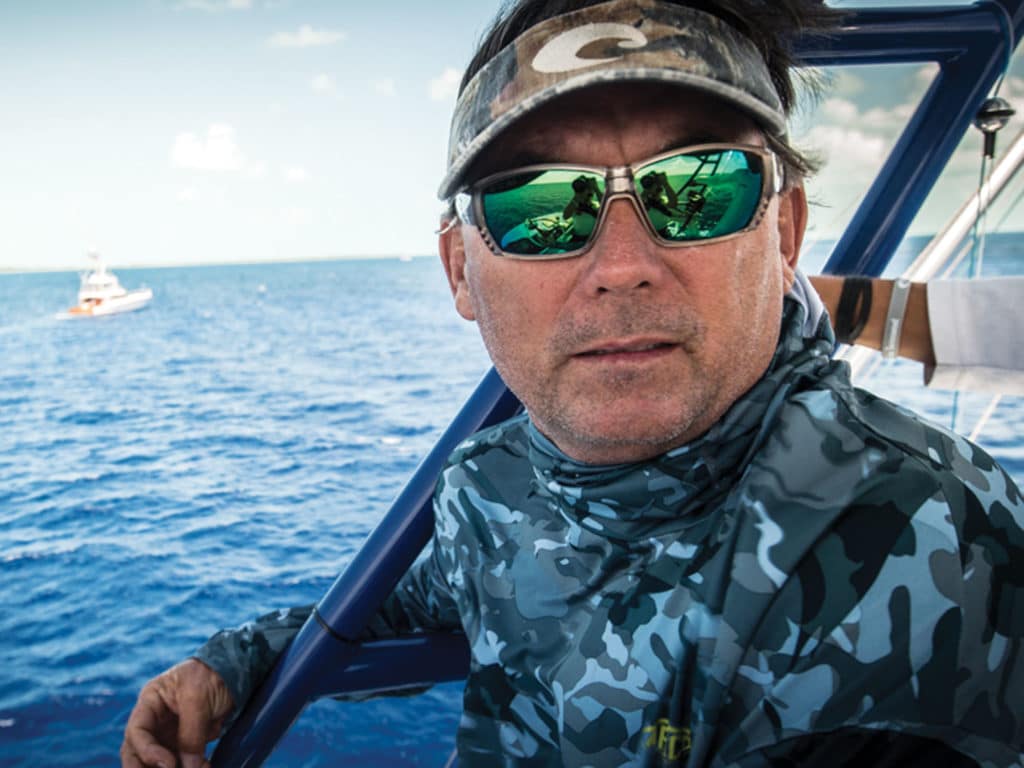
“Lavish parties and camaraderie are more important than fierce competition,” Sabin continues. “We want to celebrate the sport we all love so much while working to preserve the fishery for generations to come. We don’t see the numbers of fish we used to, and that’s a problem. We know they are still swimming through those waters, so they are certainly still worth fighting for. Without sound scientific data, we have no hope in bringing back the stock numbers that once made these waters some of the richest on the planet.”
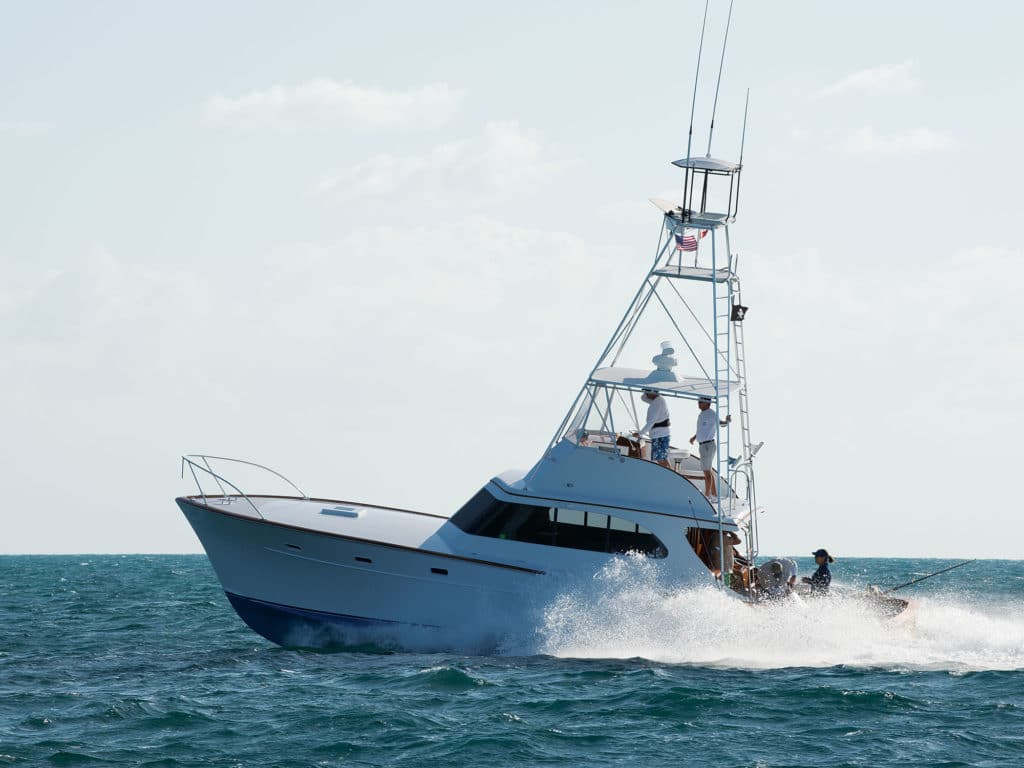
Hopeful For Another Chance
Calm seas and light winds likely prevented us from seeing the fish as we had hoped, but a bluefin was caught on the last day of the event by a boat trolling ballyhoo for blue marlin off Cat Cay. The fish are there, albeit not in the numbers experienced by those fortunate enough to have fished there in the best years. But it’s still worth doing. Just anticipating the possibility of catching a giant bluefin in these beautiful waters makes the hours of waiting worthwhile. Like everyone else at the 2015 event, the anticipation to get back this spring is high.
After fishing both tuna tournaments, I can positively say Amanda and the Costa team made this the best tournament I’ve fished in a long time.
— Capt. Bill Harrison
“All the captains and anglers fishing this tournament understand the task before them is not an easy one,” says Sabin. “To successfully bait, hook, fight, leader and tag a bluefin in Cat Cay is a feat. Without proper weather to alleviate conditions, that task becomes much more unattainable. Many anglers have put in days, weeks — even years trying for that one fish. I’m here to tell you though, having seen everything come together in perfect harmony, it’s the sweetest thing in the world when you do finally catch that fish. You can almost sense the ghosts of the anglers who pioneered our sport in those crystal-clear waters and can get caught up in the romanticism of a bygone era. Being part of it is truly magical.”
